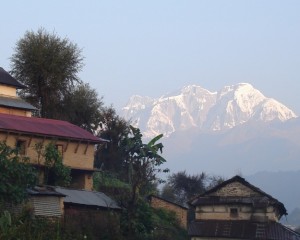Things to Pack for Mera Peak Climb in 2024
You are all set to start on the Mera Peak Climbing. But have you packed up all the things required to make your trip better?
The Mera Peak is situated at a height of 6476m with the reward of the breathtaking scenery. However, the expedition to the peak needs careful planning and preparation.
Proper packing is a matter of convenience. It is also a critical factor for your safety and success on the mountain.
Stay with me till the end to find out all the things to pack for Mera Peak Climb 2024.
What are the essential gear to pack for Mera Peak Climbing?
Proper packing is key to a successful expedition. There is a checklist of the equipment for Peak climbing.

But which are required to ascent Mera Peak. Let us find out more about them:
Climbing Gear
- Harness: Provides safety and support during ascent and descent.
- Helmet: Protects against falling debris and accidents.
- Climbing ropes: Essential for securing yourself and your team on steep sections.
- Ice axe: Aids in stability and self-arrest on icy slopes.
- Crampons: Improve traction on snow and ice.
Clothing
- Base layers: Moisture-wicking and insulating to regulate body temperature.
- Insulating layers: Fleece or down jackets to trap warmth.
- Waterproof jacket and pants: Protect against wind, snow, and rain.
- Warm hat and gloves: Essential for protecting extremities from frostbite.
Footwear
- Mountaineering boots: Sturdy, insulated boots with good ankle support and crampon compatibility.
- Socks: Wool or synthetic socks to keep feet warm and dry.
Camping Gear
- Tent: Provides shelter during overnight stays at high altitudes.
- Sleeping bag: Rated for sub-zero temperatures to ensure warmth at night.
- Sleeping pad: Insulates against cold ground and adds comfort.
- Headlamp: Essential for navigating in the dark and during early morning starts
For medical needs
- First aid kit: Bandages, pain relievers, and blister treatment.
- Prescription meds: Bring enough for the trip.
- Altitude sickness meds: If needed, like acetazolamide.
- Sun protection: Sunscreen and lip balm with SPF.
Navigation and communication
- Map and compass: Essential for orientation.
- GPS device or smartphone: Use GPS apps for navigation.
- Communication: Two-way radios or satellite phones for safety and coordination.
Nutrition and Dehydration
- High-energy snacks: Granola bars, nuts, and trail mix keep the energy up.
- Dehydrated meals: Lightweight and easy to prepare.
- Water purification: Tablets or filtration ensure safe drinking water.
- Electrolytes: Supplements help maintain balance and hydration.

How to pack gear effectively?
Now that you know all about the essential gear for successfully ascending Mera Peak. For peak climbing, it is better to learn how to pack effectively.
Organise by category
Group similar items together, such as clothing, camping gear, climbing equipment, and personal items. This makes it easier to locate what you need and prevents items from getting lost or misplaced.
Prioritise essential items
Identify the most crucial gear you'll need during the climb, such as climbing equipment, warm clothing, and first aid supplies. Pack these items at the top or in easily accessible compartments of your backpack for quick access when needed.
Use packing cubes or stuff sacks
Utilise packing cubes to make space and compress your clothing and gear. This helps save space in your backpack and keeps items organised. Consider colour-coding or labelling the cubes for easy identification.
Pack heavy items close to your back
Place heavier items, such as climbing gear or water bottles, closer to your back and towards the bottom of your backpack. This helps distribute weight evenly and maintains balance while hiking.
Pack strategically for easy access
Place frequently used items, such as snacks, water bottles, maps, and rain gear, in external pockets or compartments for easy access without having to unpack your entire bag.
Consider weather and terrain
Pack clothing and gear appropriate for the expected weather conditions and terrain. Keep rain gear and extra layers easily accessible in case of sudden changes in weather.
Balance weight distribution
Distribute weight evenly throughout your pack to prevent strain on your back and shoulders. Avoid overloading one side of the pack and adjust straps to ensure a comfortable fit.
Secure loose items
Use carabiners or straps to secure any loose or dangling items on the outside of your pack to prevent them from catching on branches or rocks while hiking.
To wrap up, Mera Peak Climbing is a challenge that demands preparation. This ascent consists of high altitudes and varied terrain. Trekkers must be equipped to adapt to unpredictable weather conditions and trekking days.
With the expertise of Nepal Vision Treks, an ascent of Mera Peak can be a perfect journey. Trekkers can successfully scale the majestic peak with comprehensive preparation, determination, and decision-making.

FAQS







